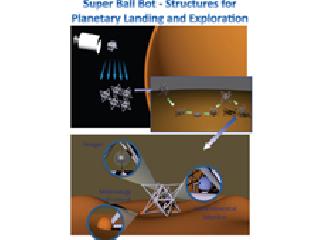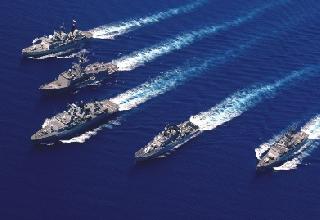
NASA's proposed "Super Ball Bot". Photo: NASA
WASHINGTON (PTI): NASA's proposed "Super Ball Bot" - which looks like a squishable mess of ropes and tent poles - could hold the key to making landing a rover on another planet easier and far less expensive, researchers say.
Vytas SunSpiral and Adrian Agogino at NASA Ames Research Center in Moffett Field, California and their colleagues suspect there might be a way to make solar system exploration much simpler and cheaper, by embedding science instruments inside a flexible, deformable robotic exoskeleton.
This spherical structure might be able to land without assistance, absorbing most of the shock of impact itself and so saving mass needed for more complex landing gear.
Once the spacecraft has reached an extraterrestrial surface, it could use this same structure to roll around without wheels, propelling itself by making slight tweaks to its shape.
The design, called the Super Ball Bot, relies on the concept of tensegrity, an approach to building structures that first emerged in the art world.
Tensegrity structures consist of rigid components (such as hollow, cylindrical rods) connected by flexible materials (such as elastic cable).
Since they are deformable, the robots could also interact more effectively with the environment, extricating themselves from surfaces, such as soft sand, that challenge traditional wheeled rovers.
But Mars, which has a thin atmosphere that would likely require a ball bot to carry a parachute, isn't the first target the team has in mind.
Instead, they're considering Saturn's moon Titan, which boasts an atmosphere which can slow the spacecraft's descent enough so that the robot can be dropped, sans airbag or parachute, from 100 kilometres or more above the surface.
The study was published in the journal IEEE Spectrum, the journal of the Institute of Electrical and Electronics Engineers.
 Previous Article
Previous Article Next Article
Next Article













The Indian Air Force, in its flight trials evaluation report submitted before the Defence Ministry l..
view articleAn insight into the Medium Multi-Role Combat Aircraft competition...
view articleSky enthusiasts can now spot the International Space Station (ISS) commanded by Indian-American astr..
view article